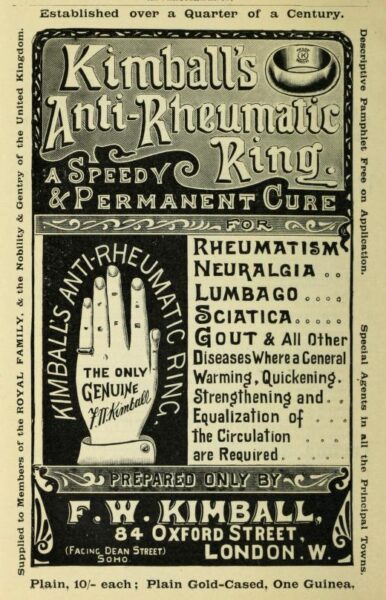Nothing very funny about today’s remedy, I’m afraid.
Adverts for abortifacients appeared in many 18th- and 19th-century newspapers, but they had to be discreet, as is the case with this one, which focuses on the pamphlet before mentioning the availability of the pills.
The pamphlet was most likely an advertisement for Mr and Mrs White’s other services – they also offered lying-in accomodation, where women who would otherwise give birth alone could “depend on being treated with honour, attention and secrecy.” Their babies would also be put out to nurse and be “humanely taken care of.” The reassuring tone of the couple’s adverts might have given hope to isolated women faced with unwanted pregnancies, and Mr and Mrs White initially come across as kindly souls who just want to help people.
But then they hit the reader with the price of the pills. At 1l. 2s. per box, these are only for the rich or the desperate, and the Whites’ intentions become more ambiguous.
Image above: Detail from Côt ou tard la vérité se découvre by J. Arago (1790-1855). Courtesy of the US National Library of Medicine.
This Day is Published, Price 1s.
By J. WHITE, Surgeon and Man Midwife, and Mrs.
WHITE, Midwife, at No. 2, London House Yard, the
North Side of St. Paul’s Church Yard.
AN Address to the Community on concealed
PREGNANCY, worthy the perusal of Ladies, whose
situation requires a temporary retirement, as therein is set
forth the expence of the months Lying-in.
Where may be had, Mr. White’s Restorative Salo Pills,
(stamped according to Act of Parliament) at 1l. 2s. per
box, which is an effectual remedy to remove all obstruc-
tions or irregularities, and as Ladies are subject to many
complaints, which through delicacy they often conceal to
the prejudice of their healths, Mrs. White may be consulted
with on any ailment or disorder incident to her own sex.
All letters, post paid, attended to, and medicines sent
into the country if required.
Source: The Daily Universal Register (London) Thursday 2nd February 1786
Note: “expence” is as shown.



